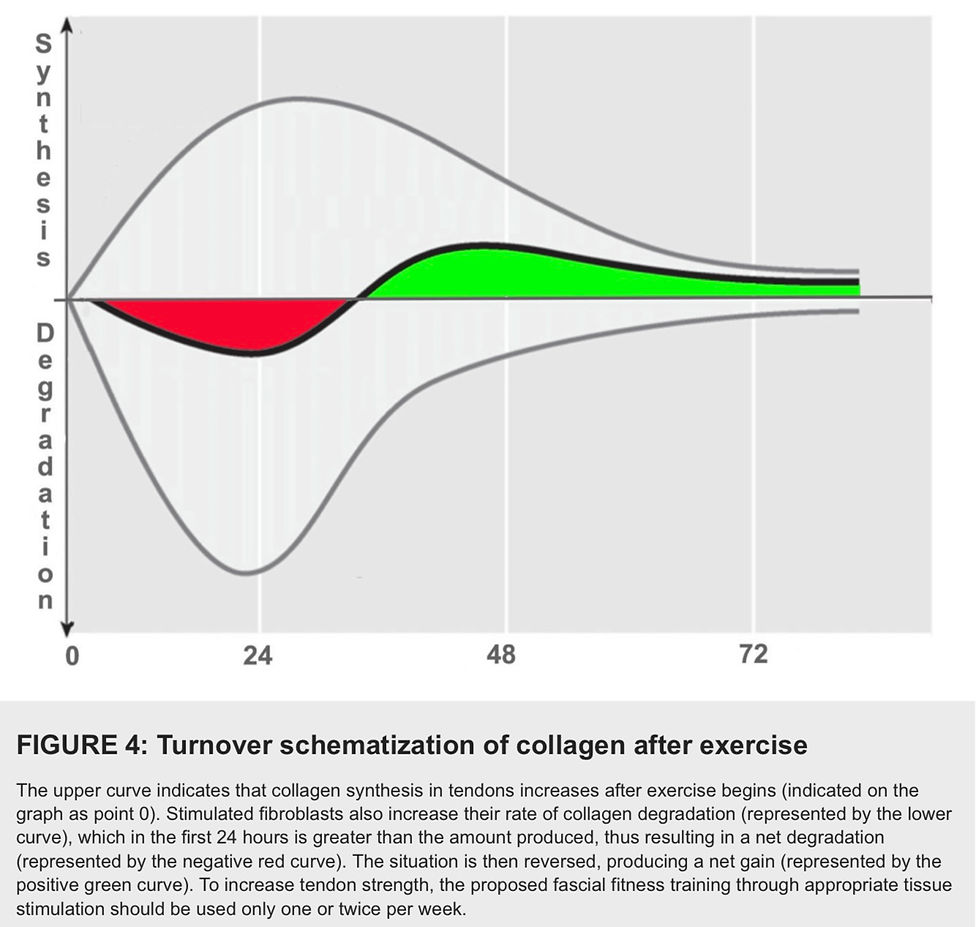What is Delayed Onset Muscle Soreness? And are we blaming our muscles unfairly?
- Pieta Ruck Keene
- Jun 16
- 3 min read

Delayed onset muscle soreness (DOMS) is that pain we feel a day or two after exercise that makes it really hard to walk down the stairs or take off a T-shirt. This delayed pain has been attributed to lactic acid build up, to micro lesions, or inflammation of the muscles. Over the past decade or so people have poked holes in these theories because they don’t explain the symptoms of DOMS for example:
Lactic acid levels return to baseline after we stop exercising.
Lactate production is greater with concentric exercises whereas DOMs is felt after eccentric strength training.
Markers for muscle damage (plasma creatine kinase or evidence of sarcolemma injury) are not found in people with DOMS.
Researchers are now saying that our fascia is the cause of our delayed discomfort after unaccustomed eccentric contractions because:
Markers of connective tissue breakdown (urinary hydroxyproline and hydroxylysine levels) rise in correlation with DOMS.
Markers for extra cellular matrix remodelling strongly increase after eccentric exercise.
DOMS can be induced with electro-stimulation (electrical pulses) to connective tissue.
Fascial thickness has been found to increase and tissue mobility decrease on the days after eccentric exercise.
This graph shows the balance between collagen breakdown and rebuilding after exercise. Happily, this period shortens as we get more used to the specific exercise load or intensity.
What research now suggests is that after unfamiliar eccentric contractions the collagen based soft tissues (tendons, ligaments, bursae and fascia) undergo remodelling. It is thought that because fascia is rich with sensory receptors and has three times higher nerve density than our muscles, this remodelling is what we actually feel when we experience DOMS. The picture below shows the increasing stiffness in fascial tissues after exercise.
So What is Fascia?
We have a layer of connective tissue that sits under our skin like a catsuit. It is arranged in a criss cross/grid like fashion and can stretch or compress to transfer force throughout the body. This superficial fascia moves freely over our bones and muscles. Imagine it is like the white layer of an orange surrounding the segments. Running through our muscles and around our organs is deep fascia which is inelastic, strong and almost entirely made up of collagen. This is like the walls of the orange helping to provide support and structure to our muscles. The celebrity of the fascia world Tom Myers includes all of our collagenous structures under the umbrella of fascia too (tendons, ligaments etc)
However one defines it. Our fascia both wraps around our muscles and links to other muscles. Under eccentric load (active lengthening) it absorbs excessive forces to protect our muscles and then transfers energy to support the muscles when the fibres shorten again. Water is the medium of exchange inside this connective system. To get water into the fascia it needs dynamic compression and on release water and healing proteins are absorbed like a sponge comes. This dynamic compression also stimulates collagen synthesis.
How does this information affect my workout?
In Tom Myer’s words: The "isolated muscle theory" that has dominated our thinking has limited our perception of this body wide "give" that is essential to resilience.
This means that we should design our exercise programs with our fascial structure in mind.
Warm Up
A full body warm up should incorporate spiralling movements to help the body move in all directions. It should also include elastic recoil movements and some jump rope of varying speeds too. Here's a picture of me noodling about with a long band to illustrate spiralling.

Training
When strength training move slowly - especially in the eccentric phase of the exercise.
Incorporate full body exercises
Add plyometrics and exercises that develop elastic recoil
Move and load in multidirectional ways
Flow between movements/ exercises

After exercise
Active recovery requires active stretching, gently moving in and out of stretch with low load. Exercise following the days after a big workout will need to be gentler and easier, targeting less affected body parts too.
Massage, compression garments, contrast water therapy, and foam rolling all have evidence (of varying quality) to suggest that they help reduce DOMS. It is thought that these modalities serve to increase blood flow to the neighbouring arteries, enhance fascial layer sliding, and reduce pain messaging in the central nervous system.

Can Supplements Help?
There is also evidence that gelatin/ collagen supplementation after exercise may help. So too does eating protein rich in leucine which is an essential amino acid found in meat and dairy products. Turmeric and curcumin are also thought to reduce the inflammatory responses to exercise. Anti-inflammatory drugs however, have been found to: “impair regeneration and diminish tissue adaptation.” So deep heat will probably be more helpful than pain pills for your DOMS.
And there you go. If your training gives you DOMS I’d love to know if this approach changes things for you.
Xx
P









Comments